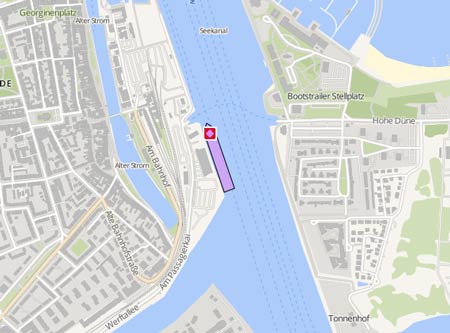HMNZS MANAWANUI
Course/Position
Latest ports
Latest Waypoints
Latest news
No charges yet after sinking
No charges have yet been laid over the sinking of the 'Manawanui'. thogh multiple failures of the crew, the ship, and the Navy itself were identified in an official inquiry, the NZDF said on Aug 28. The investigations were ongoing. Consulting foreign and other agencies about the Official Information Act (OIA) took much longer than anticipated as a result of a high volume of work, staff illness and absence, and a reduction in staffing. The information provided within it was provided by the government of Samoa on basis of confidence.
Wreck will become part of the reef
Samoa's Prime Minister Fiame Naomi Mata'afa said that the the wreck of the HMNZS 'Manawauni' can stay exactly where it sank after being presented with options regarding the vessel's future, which were presented to the cabinet. The shuo already been incorporated into the reef and all the toxic elements have been removed. Local authorities have maintained a 'no-go zone' around the site of the wreck, making it in inaccessible for fishing. The New Zealand Defence said they were still completing technical and environmental analysis of the wreck and surrounding area to inform future decisions of both governments.
NZ Navy published its final Copurt of Inquiry report
On April 3, the Royal New Zealand Navy released its final Court of Inquiry report detailing the circumstances that led to the loss of the HMNZS 'Manawanui', while conducting a hydrographic survey of a reef. Nine recommendations were outlined in the report, focusing on risk management, procedural improvements, force generation, seaworthiness standards, training protocols, and hydrographic capabilities. The Court of Inquiry, presided over by Commodore Melissa Ross, identified direct causes including the ship maintaining a heading toward land and confusion over the vessel’s autopilot status. Critically, the crew attempted to adjust course using azimuth thruster controls while the ship remained in autopilot mode, rendering their actions ineffective. The situation was compounded by a mistaken assessment of thruster control failure and subsequent non-adherence to emergency procedures, which should have included switching from autopilot to manual control: “The Court found deficiencies in the training and qualifications of key ship’s personnel involved in the incident, risks related to the survey task were not sufficiently identified, discussed and mitigated, and instructions or procedures were lacking.” The investigation revealed that the ship’s Commanding Officer was not platform endorsed for the vessel, a requirement specified in the New Zealand Manual of Navigation. Chief of the Navy Rear Admiral Garin Golding acknowledged the findings, highlighting a concerning gap between work as imagined and work as done. The Navy has already implemented several corrective measures, including reviews of risk management procedures and training protocols. The investigation identified twelve contributing factors, including training and experience deficiencies, inadequate military hydrographic planning, procedural issues, supervision gaps, and leadership concerns. The Navy announced plans for a comprehensive transformation program to address systemic issues, including the lack of standardization across the fleet. Full report: https://www.nzdf.mil.nz/assets/Uploads/DocumentLibrary/MAN-COI-ROP-FINAL-31-Mar-25_Redacted-v2.pdf
Upload News

